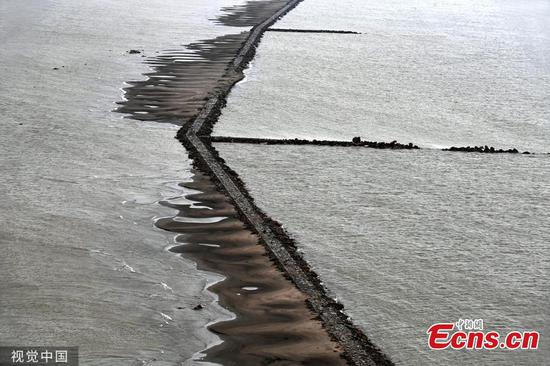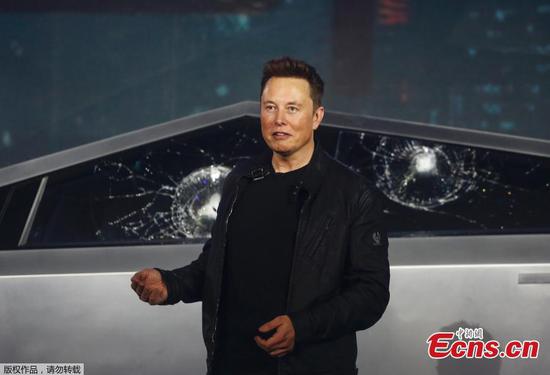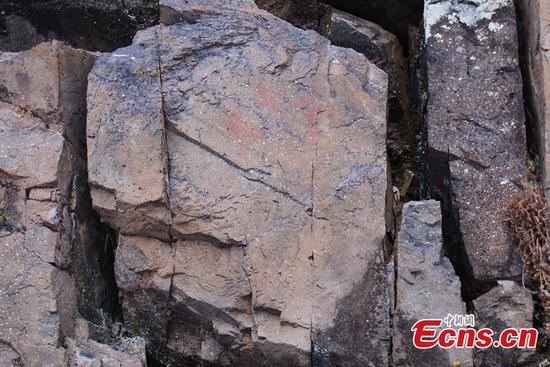The peak in China's carbon emissions is estimated to be hit around 2025, five years ahead of its 2030 Paris Agreement target, thanks to efforts made in energy transformation, an industry expert said.
"I hope that with the 14th Five-Year Plan (2021-25), China will bring its carbon emissions goal forward. That will be a big step for the world. China is credible. It makes a plan and usually achieves it," Lord Nicholas Stern, chair of the Grantham Research Institute under the London School of Economics and Political Science, said.
The former chief economist at the World Bank noted that in the past five years, strong technological changes have taken place in China and the country has demonstrated a deeper understanding of the danger of unmanaged climate change.
"I believe that achieving the goal ahead of 2030 is more than possible," Stern said.
During the 2015 Paris Climate Summit in France, President Xi Jinping delivered a speech at the opening ceremony, with a promise that China's carbon emissions will peak by 2030, when its forest stock is estimated to be 4.5 billion cubic meters more than the level of 2005, and that China will strive to achieve the goal as early as possible.
A report released by the Ministry of Science and Technology showed that in 2017, China's carbon intensity per unit of gross domestic product decreased by 46 percent from the level in 2005. The growth rate of its carbon emissions has posted nearly zero growth since 2013.
The report said that between 2010 and 2017, the global carbon dioxide concentration climbed and its growth rate also increased.
The Chinese government has taken active steps such as promoting clean energy projects and major ecological initiatives, achieving remarkable results in reducing carbon emissions.
"China has already fulfilled its promise to cut carbon emissions by 40 percent to 45 percent compared to the level of 2005, three years earlier than planned," said Ma Aimin, deputy director of the National Center for Climate Change Strategy and International Cooperation under the Ministry of Ecology and Environment.
Stern said China now leads the world in many aspects such as rail transport and digital systems. The next step is to take advantage of those aspects to manage the energy system better.
"China has created in the past 20 years many potential advantages, and it is starting to use some of them. But I think it can use those advantages much more quickly and strongly, particularly in the energy sector. China is in a good place to put these advantages to work," he said.
Industry experts said energy efficiency in electric power is maximized through technology and there is still a lot of room in that field.
China is making progress saving energy through its railways. Data from China Railway showed that in 2018, the national railway energy consumption converted to standard coal reached 16.2 million metric tons, 25,700 tons lower than the level in 2017.
Railway chemical oxygen demand emissions were 1,878 tons, down 0.7 percent year-on-year. Sulfur dioxide emissions fell 39.7 percent year-on-year to 9,836 tons.
The 14th Five-Year Plan will underscore the importance of the clean and efficient use of fossil fuels. It will require that by 2030, non-fossil energy will account for 20 percent of primary energy consumption.
"Through the 14th Five-Year Plan, China can step into the absolute reduction of carbon emissions, find new ideas and alternatives, and lay the foundation for a long-term goal," said Wang Yi, deputy head of the Institutes of Science and Development under the Chinese Academy of Sciences.
"The plan is critical for China's carbon emissions goal. It is important that China's carbon emissions will start to decrease during the plan period," Stern said.


















































